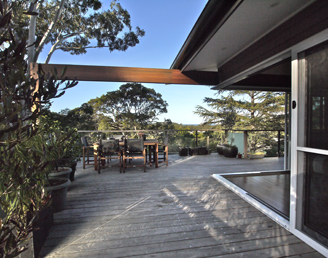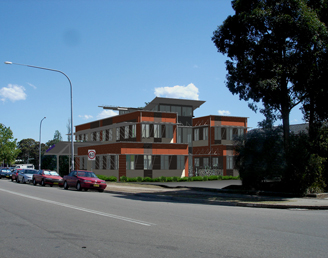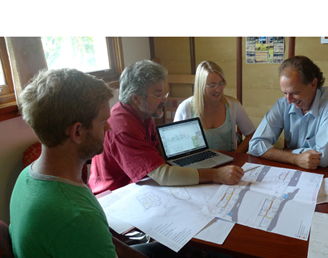3D-print a building? Make it place-responsive? Why not?
Posted by admin on 08/04/2013 at 7:49 amIf we have the technology (almost) to ‘print’ buildings, can we make them all different, so they respond to the place they are in?
A giant 3D printer – squirting concrete from its print jet – can now build a building. It is very precise, saves a lot of wasted material and energy. And it is fast – think in terms of one day to build an average home. Because computers can carry out a long list of unique tasks without confusion (well, maybe not your average home PC!), such a machine could build a street full of unique houses.

Animation of CRAFT Contour house builder at work
Or more appropriately, when in Bermagui it could build a house designed specifically for the temperate climate and the cultural context of the NSW south coast, and when in Broome, it could equally build a lovely troppo home that responds to the dry season breezes and can hide from cyclones – all without getting the least bit confused.
This presupposes that the humans who input the CAD modelling get it right! And place based design is critically important for a number of reasons, not just the energy efficiency of site specific passive design. It is also a cultural thing: Broome should not look like Bermagui, nor vice versa. Yet so much of current suburbia and cityscapes are placeless lookalikes. And this has happened when we build with ‘sticks and bricks’ – hand assembling most of the building on site. If ever there is an opportunity to get a place-responsive design right it is when building on site. Yet we (and I dissociate Envirotecture from that genralisation – hopefully that does not appear arrogant) too often get it wrong.

3D printing a moon base?
The possibility of Computer Aided Manufacture (CAM) in building has been explained most eloquently by one of its leading researchers, Behrokh Khoshnevis. He is a professor at the University of Southern California, and is the Director of the Center for Rapid Automated Fabrication Technologies (CRAFT) at USC Viterbi. He has a TEDx talk here with animations of the CRAFT machine at work.
The importance of place-based design, or place responsive buildings, has also been written about by Trevor King (mainly) and me in several journals, including a full series in Building Designers Brief. Fundamentally the theory says that if you look into the climate, topography and flora of a site you will find the necessary clues to design in a place-responive way – including by inference passive design. Overlay any appropriate or valuable human heritage (note this allows you to disregard crappy development) and you have the whole design pallette at your fingertips.

Sample page of Trevor King’s “Littleton Gardens Artists Design and Style Guide”
Combining these two disciplines is possible. Will it come to pass? Time will tell, but if it does, Envirotecture and hopefully many others will be ready to engage with the technology in an effort to secure a really good result.
Sustainable House Design
We will help you create a family home that works well, feels good, is kind to the environment, culturally appropriate and reduces your energy and running costs.
Read MoreSustainable Commercial Buildings
We design your building to help reduce your operating costs, optimize the life cycle of your building, increase your property value and increase employee productivity.
Read MoreWorking with Envirotecture
We design beautiful, sustainable buildings that work for you, your family or your business. Full range of building design, consulting and training services.
Read More






















